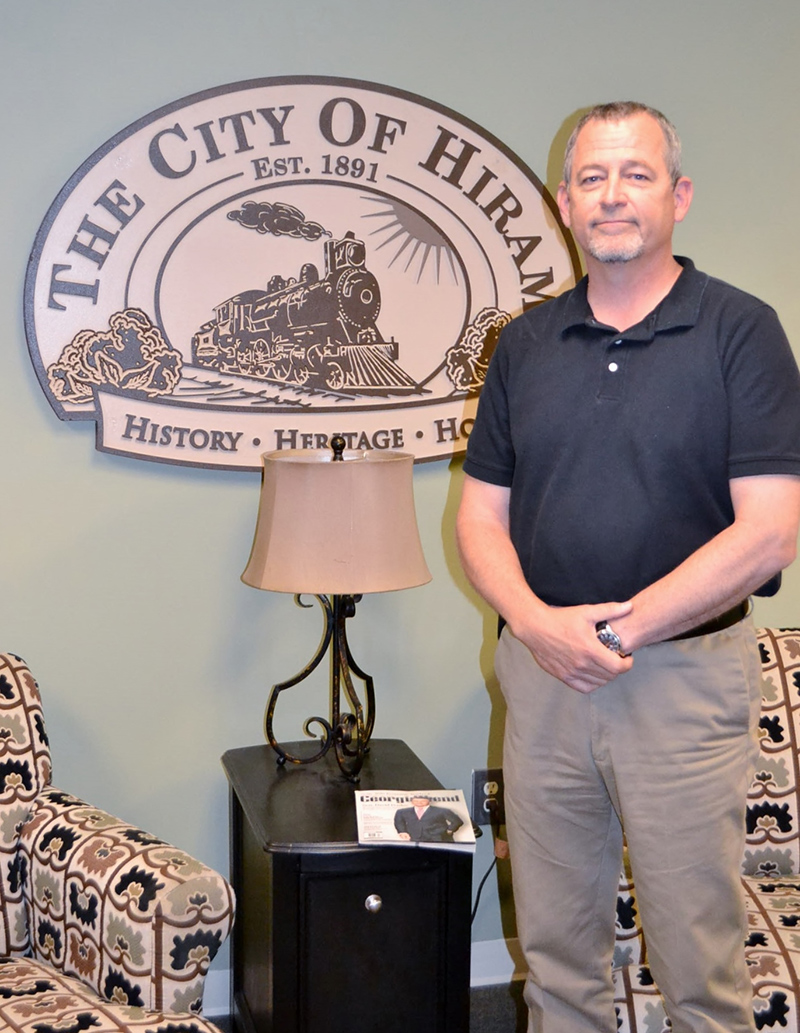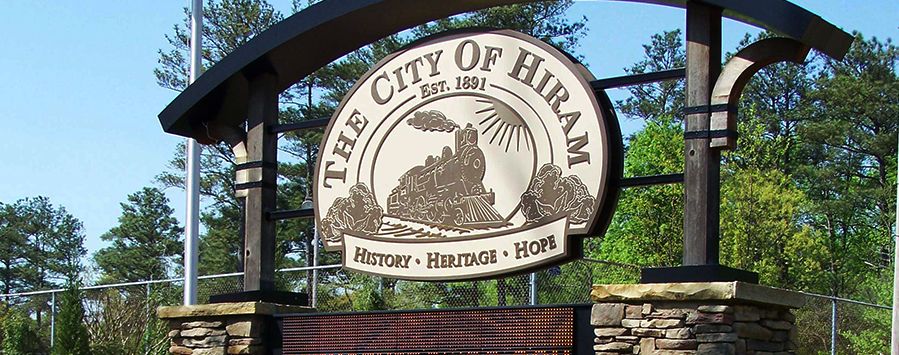
Barry Atkison, who came on board in March and started earlier this month, is Hiram’s second manager since the city changed its charter in 2012. He had served previously as city manager for Cedartown. Mayor Teresa Philyaw, council members and Atkison met last week to further their discussions regarding the ‘Phase 1’ of the project to create a downtown business overlay district. (Photo: R. Grant) |
As Hiram’s downtown streetscape and infrastructure projects reach the finish line in May, city officials are focusing on reshaping the downtown business district.
“The main street project was an absolute necessary first step to support all of this, so the city made a big investment with a vision of what downtown could become... and we had to have all that in place to support all of that,” said Barry Atkison, Hiram’s city manager.
Mayor Teresa Philyaw, council members and Atkison met last week to further their discussions regarding the ‘Phase 1’ of the project to create a downtown business overlay district (DBOD), covering the downtown area around the main street and the 12-acres that the city owns across the railroad tracks, Atkison explained, following last week’s meeting.
“From an earlier meeting we’d realized that we picked too big a bite, so we decided to develop a Phase 1. For the Livable Centers Initiative you’ve got to break it down into bite-size pieces for execution,” he said. “Those people in that area have a more common interest in how the overlay district is evolved.”
The Livable Centers Initiative (LCI) is a program through the Atlanta Regional Commission that awards planning grants on a competitive basis to local governments and nonprofit organizations to prepare and implement plans for the enhancement of existing centers and corridors consistent with regional development policies.
“It’s always going to be a marriage of public with private investment,” Atkison noted. City officials, Atkison said, want to better define optimum types of businesses and also update city ordinances that have to do with signage and alcohol licensing, he said. And also identify types of businesses that can locate realistically with what can be permitted to be in the building locations.
“One of the reasons for having the DOBD is that you want to get away from having to issue special permits for everything business [owners] may want to do. [You want to] give the people that reside and do business in the overlay district more ability to do those kinds of things on an everyday basis and not just on a special occasion basis,” he said.
According to Atkison chain-stores and especially those already lining the Hwy. 92/278 corridor would not really meet the desired criteria for the Phase 1. Instead, city officials hope to attract more boutique-style shops and unique restaurants to the downtown district.
“It was the types of businesses that would encourage people to come downtown and stick around a while...walk around and not just be in and out,” he said.
Atkison said other notable downtown upgrades can also be learned from and even borrowed from for ideas. “We don’t have to reinvent the wheel down here.”
The city’s existing alcohol ordinance allows for consumption within patio areas of restaurants and could potentially include a special events provision allowing alcohol consumption during a specific event, he said.
Atkison added that signage discussion during last week’s meeting was regarding adhering to a uniformity of city signs, while also adding to signage directing visitors to the historic downtown area.
There is no determination of how many phases will be considered in the future or what areas will be considered, Atkison said, but the council will immediately begin working on ‘actionable items’ in their agenda to begin accomplishing the goals for the Phase 1.
Atkison, who came on board in March and started earlier this month, is the city’s second manager since Hiram changed its charter in 2012 to create a manager-council form of government. He had served previously as city manager for Cedartown.
Since its inception in 1999, LCI has assisted 112 communities with more than $194 million in planning and implementation grants. LCI communities cover less than four percent of the region’s land area, but contain seven percent of its residential development, 29 percent of its commercial development and 69 percent of its office development.
HCC meet for their next regular session next week.

















